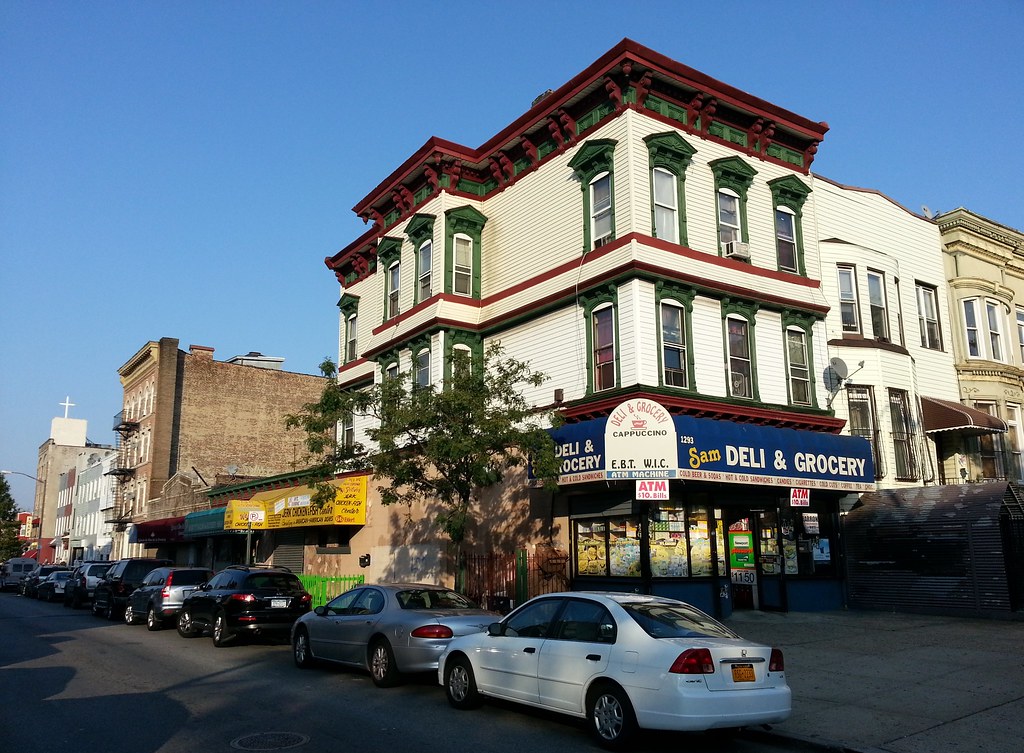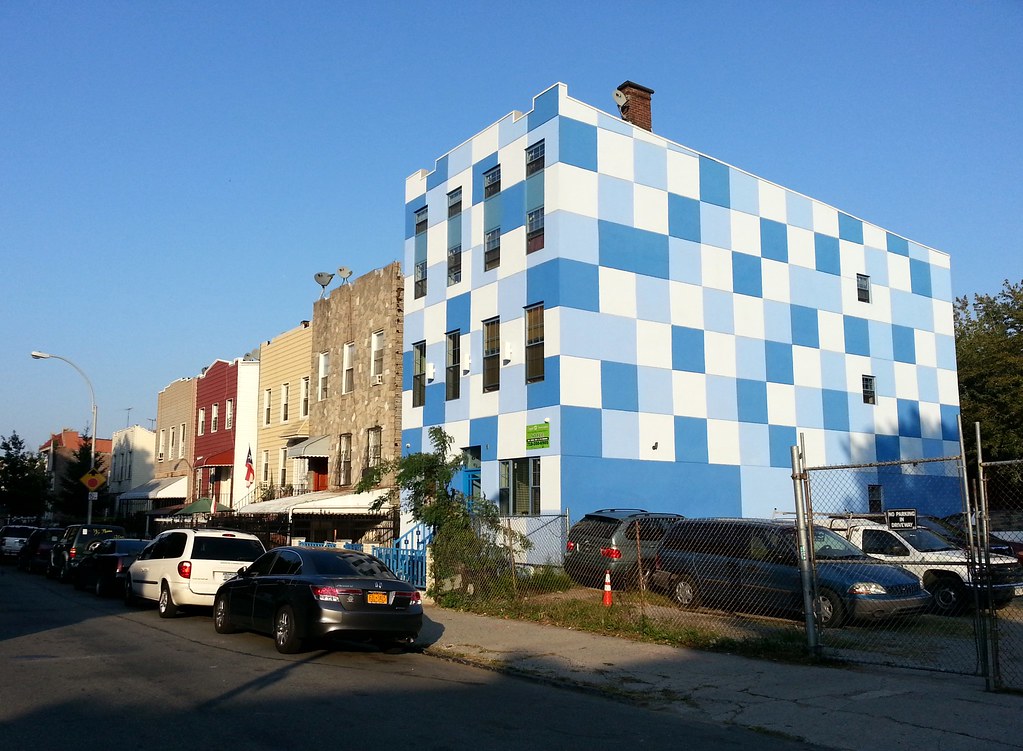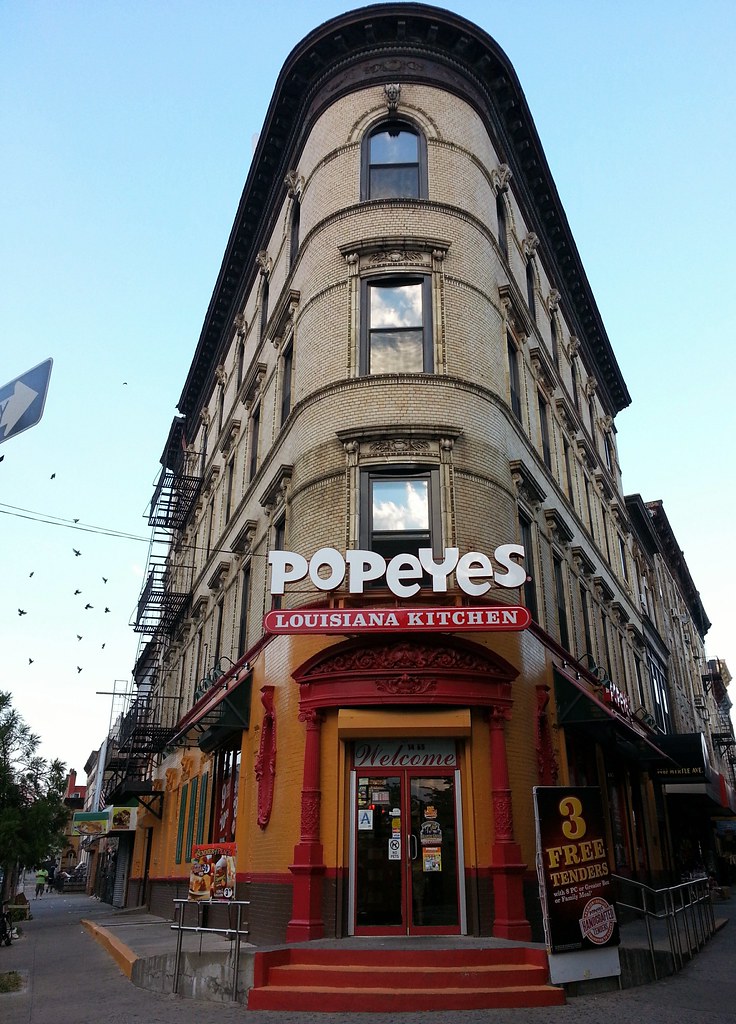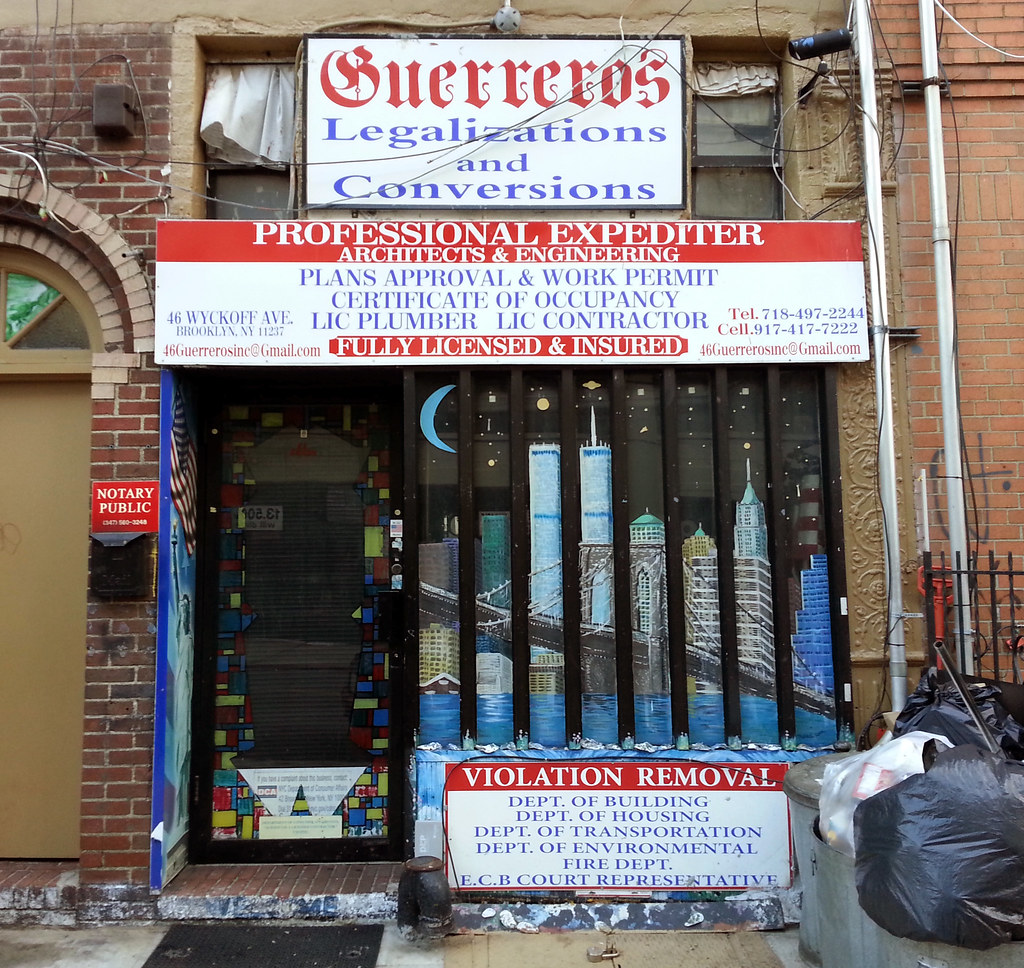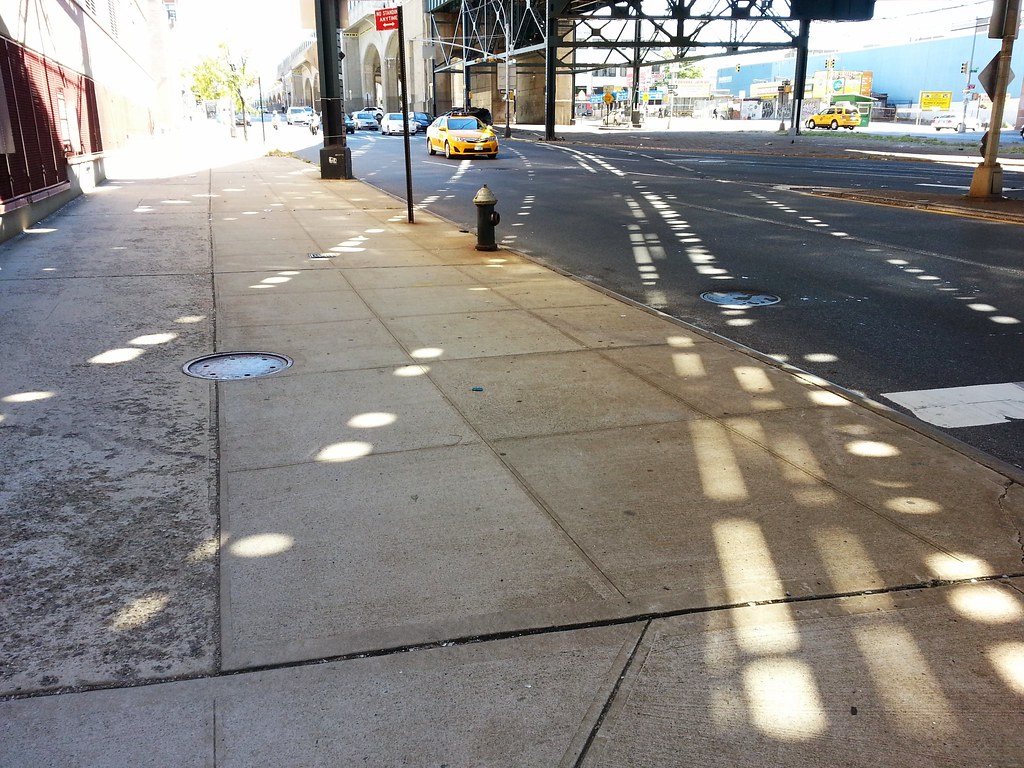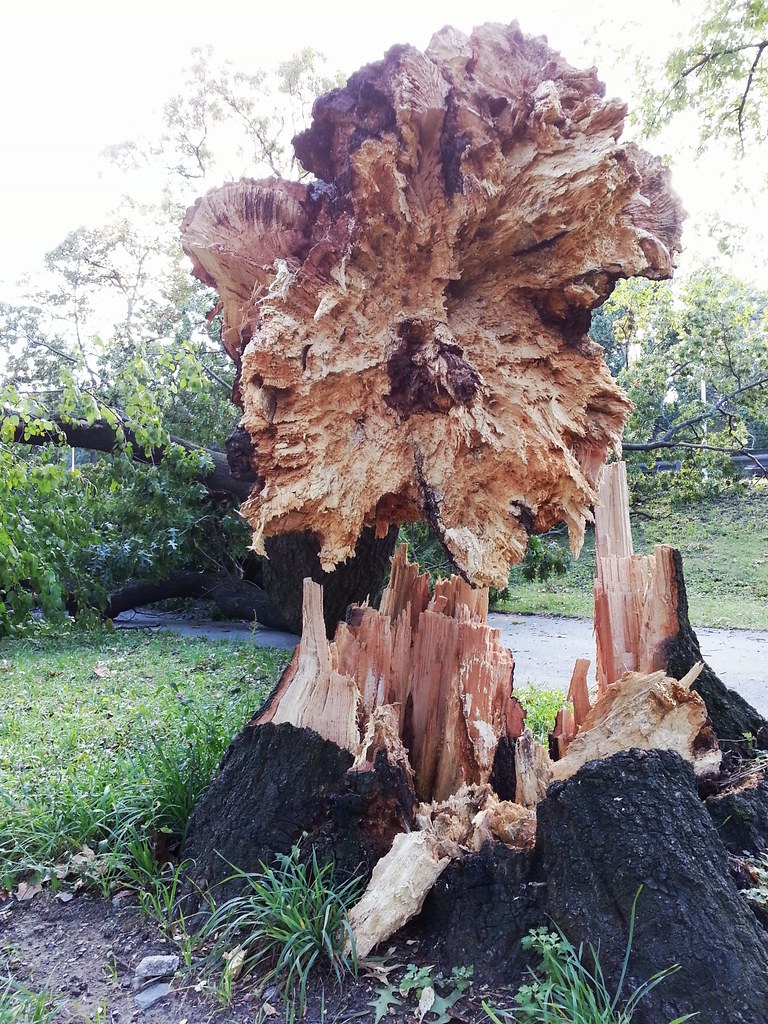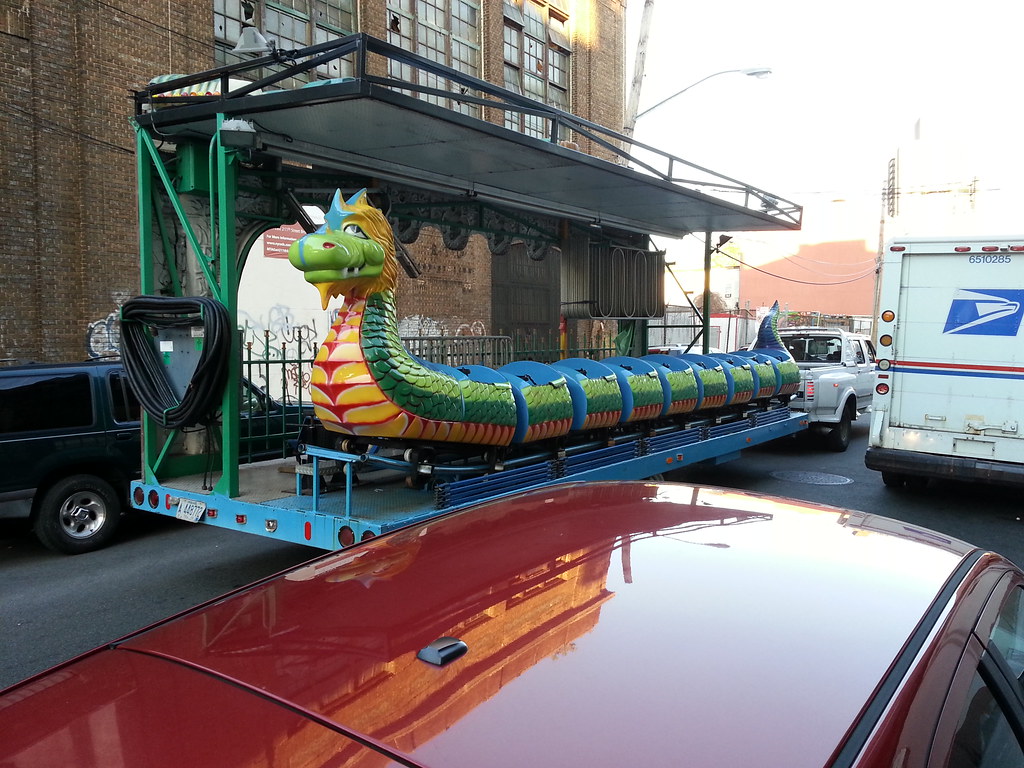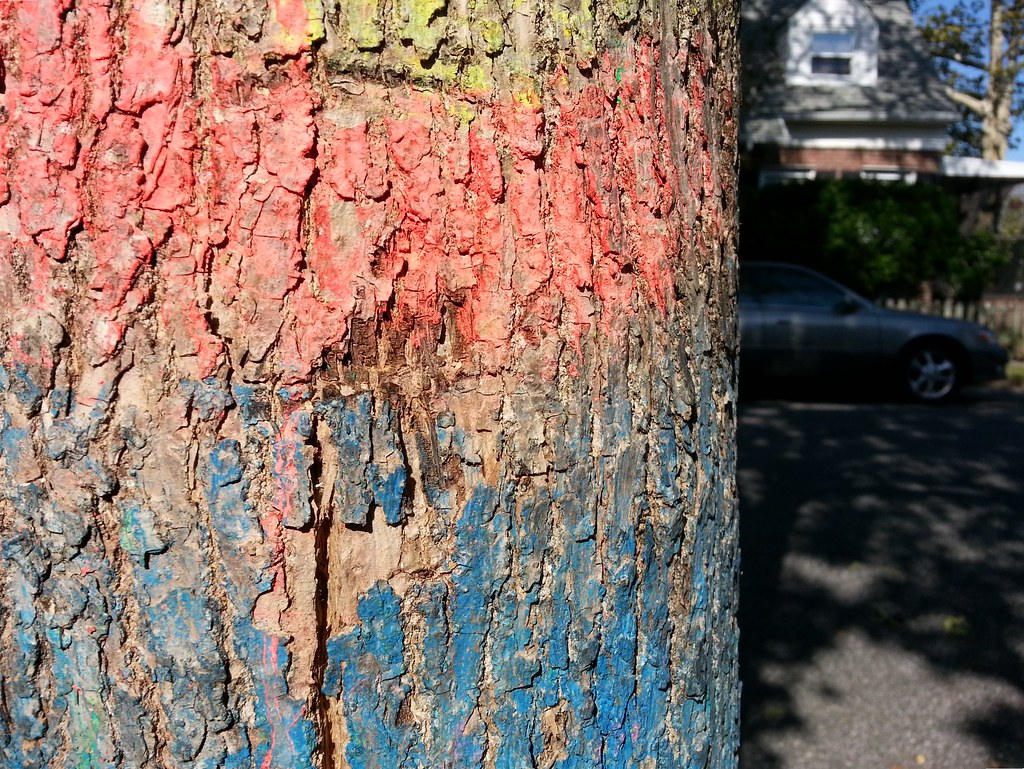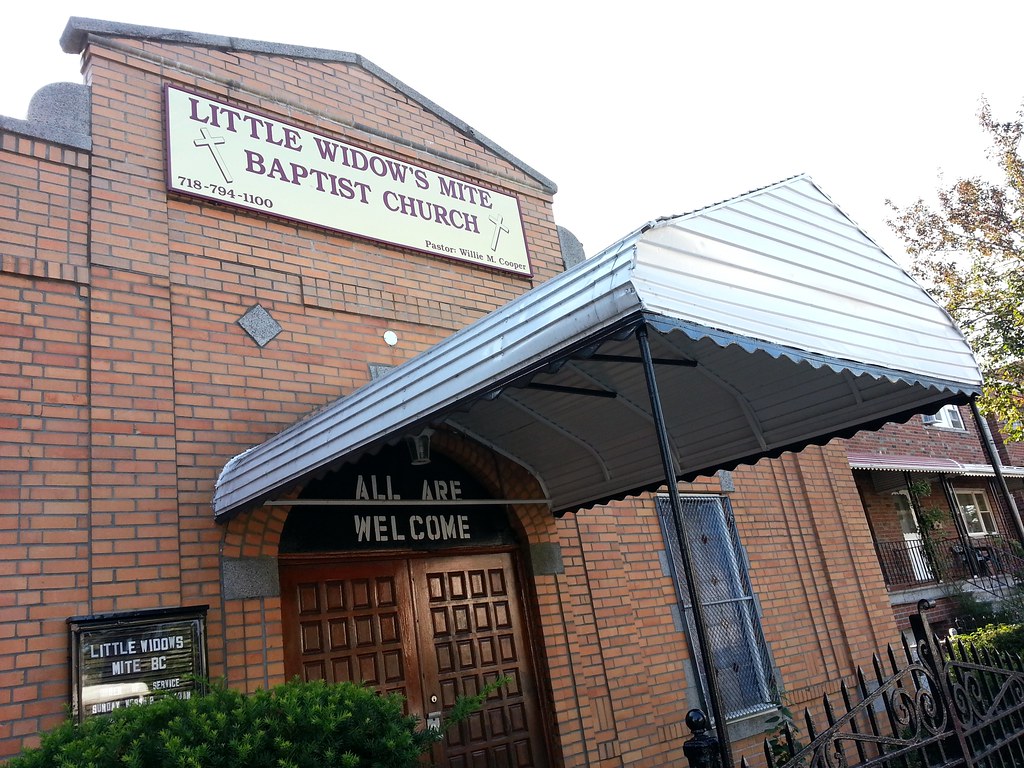
Perhaps the home of these guys?
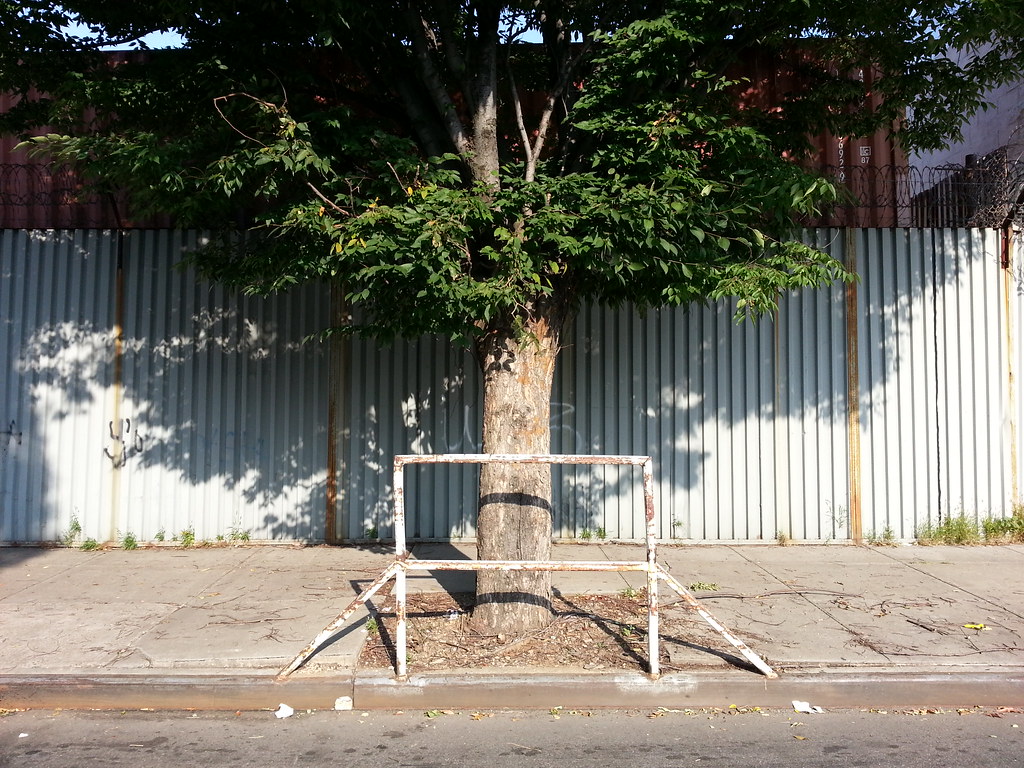
These trees don't mess around, unlike those jokers in Sunnyside.
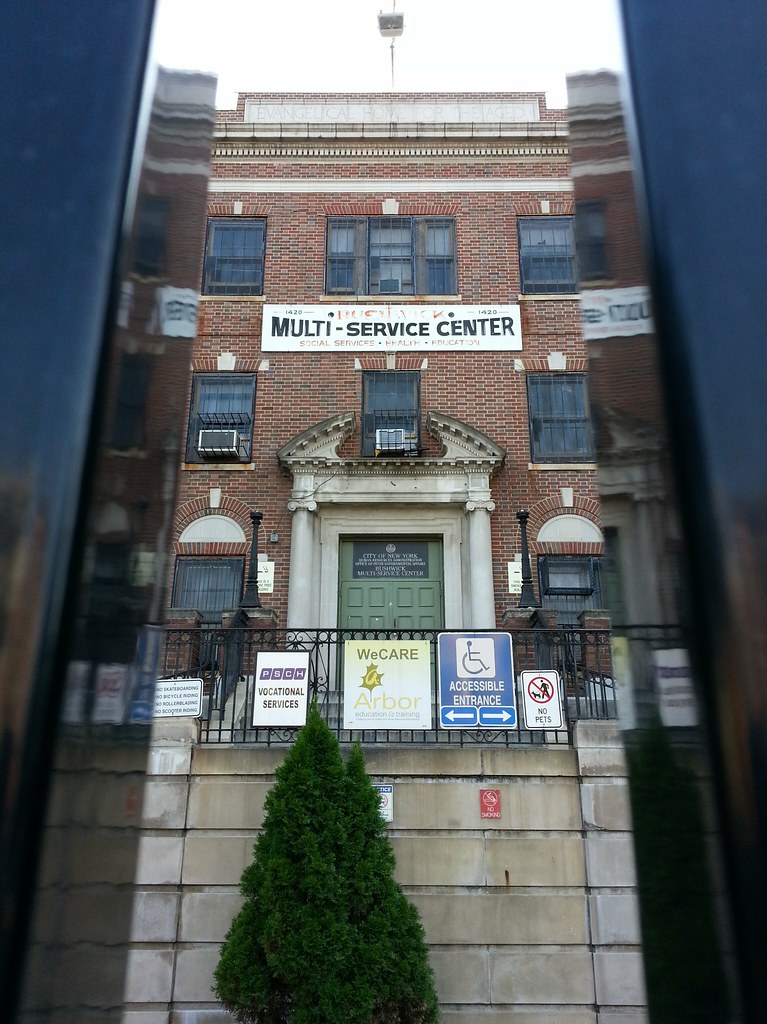
If you look closely, you can see that this was once the Evangelical Home for the Aged (a.k.a. the German Evangelical Home for the Aged), an institution established in 1879 "to provide food, shelter, clothing to persons 60 yrs. and over."
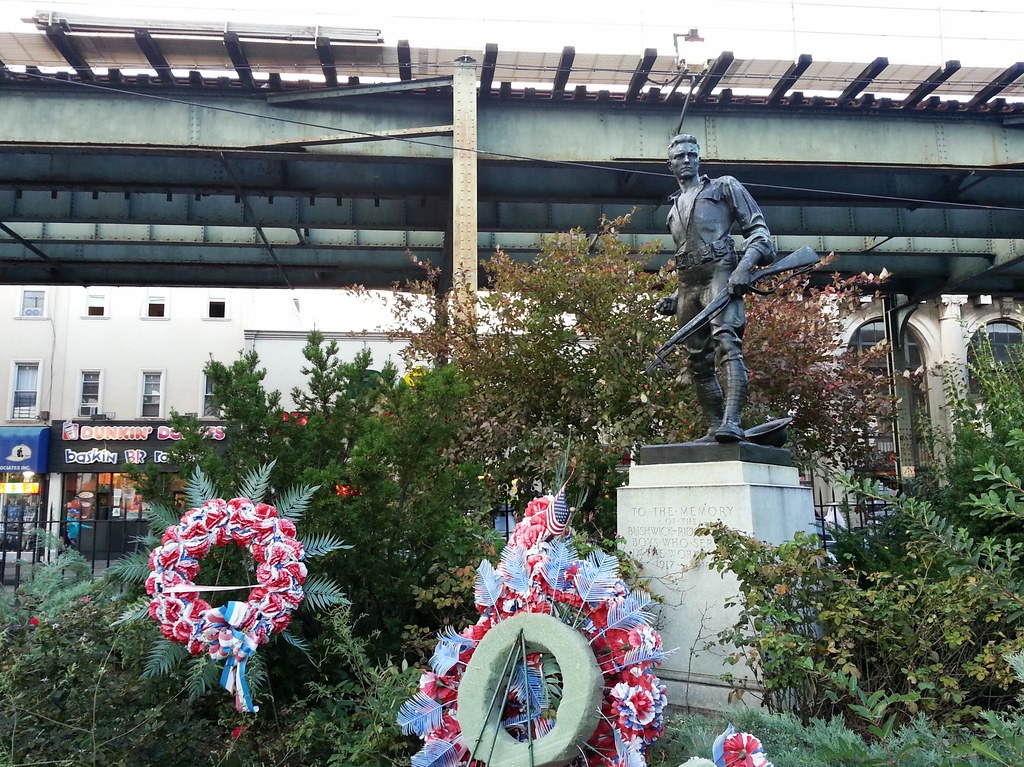
This statue, quite lonely when first unveiled, was fashioned by Pietro Montana, who also sculpted the nearby Victory with Peace.

(Note the connection to a Canarsie Line subway standpipe in the foreground.)

Soaring over the rocky streetscape of Queens Plaza

This revolving door leads down to the massive Sunnyside Yard, adjacent to Harold Interlocking.

SABER protests Mitt Romney's plans to stop funding arts programs like PBS, NPR, and the NEA..

"What so many people don't know is that we're not just brass, we're aluminum, steel, stainless steel and even plastic."

Electchester is getting less electrical, and Big Six is getting less typographical:
"Its seven high-rise towers were built in 1961 as a city-subsidized cooperative sponsored by New York Typographical Union Local 6. The union, which is known as Big Six, no longer has any connection to the complex, but about a third of its residents are retired printers [as of 1995]."
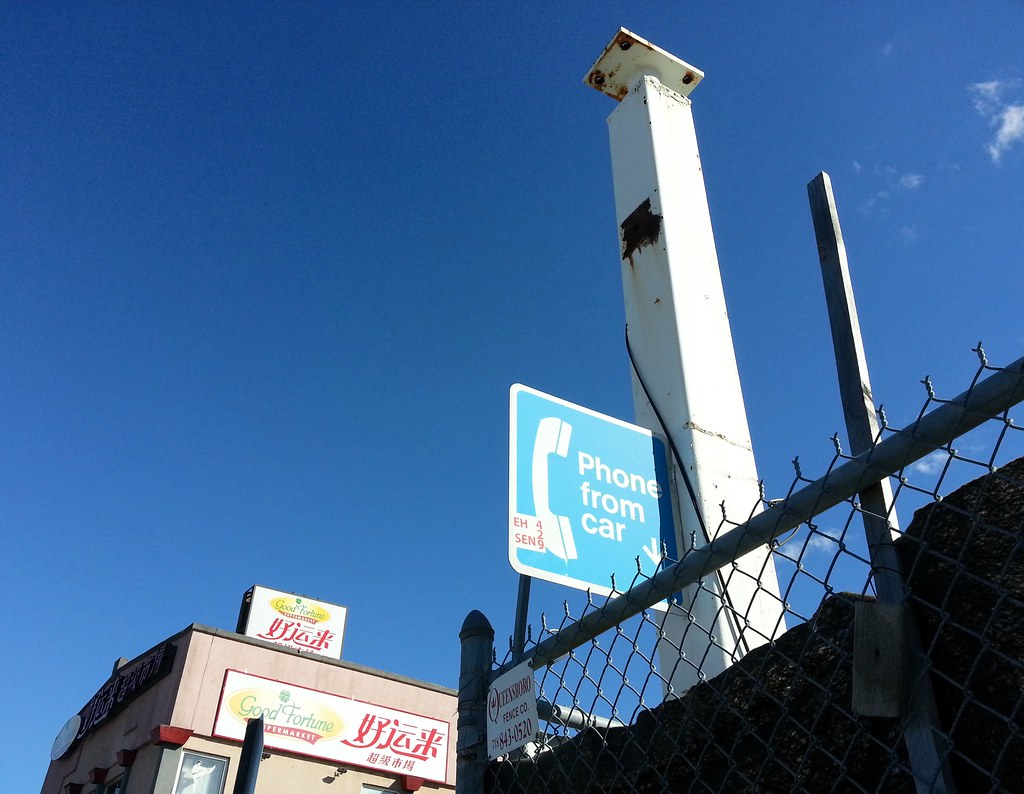
This breakthrough technology has finally made its way across the Mississippi.
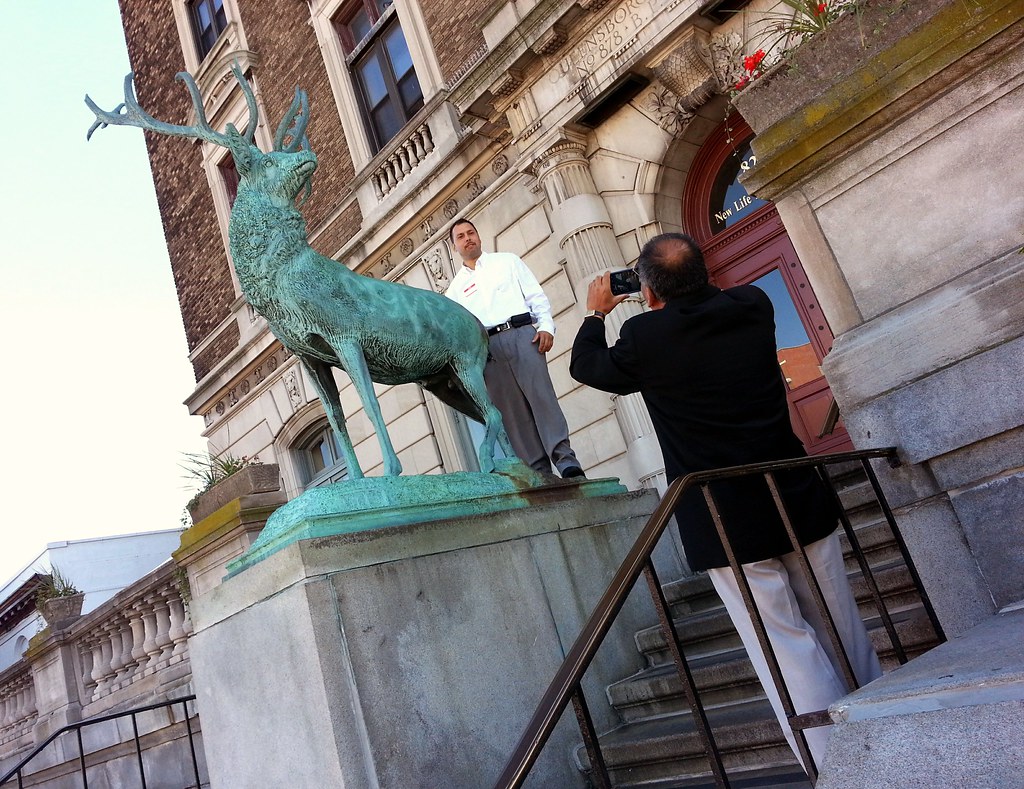
With its swimming pool, gym, Aztec-themed theater, banquet hall, bars, and bowling alleys, Lodge No. 878 was once a "social nexus" of Queens. Over the years, it has adapted to the changing times and fading fortunes of the Elks, hosting Extreme Championship Wrestling matches for a while, and currently housing the New Life Fellowship Church (led by the irrepressible Pete Scazzero). Check out this page for some fantastic photos of the interior.
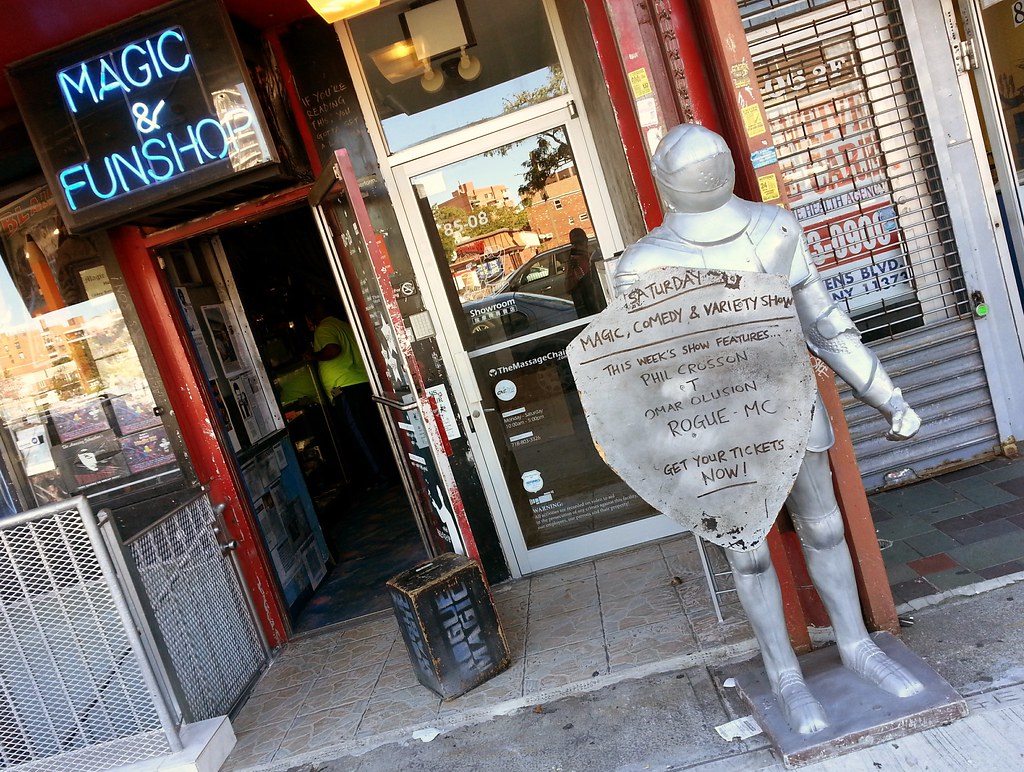
Rogue Magic and FunShop:
"There's nothing we don't have. We have candy that makes you fart all day, mini cameras, voice changers. We've got something called slush powder — it's powder you put into anybody's drink and it will freeze it up into a block of ice in one second, hot or cold. Very funny stuff."

Despite protests from women's groups, this sexist-ish statue was installed in City Hall Park in 1922. It survived there for 19 years before getting the boot, much to the delight of Mayor La Guardia, who had reportedly grown tired of looking at its bare buttocks. It has stood outside Queens Borough Hall ever since, enduring occasional fits of withering criticism — including a 2011 attack by that renowned defender of women, Anthony Weiner. It now looks like the statue's days in Queens may be numbered, however: Brooklyn's Green-Wood Cemetery has expressed interest in restoring Mr. Virtue and providing him with a more welcoming home.

There are quite a few signs like these lining Queens Boulevard in the vicinity of Borough Hall; they must be the 21st-century incarnation of this.

Today's expedition has finally led us to the fabled source of the Boulevard of Death. This little two-lane trickle doesn't look so intimidating, but just head down the road a bit and you'll see it widen into the familiar 12-lane monstrosity that roars through western Queens.
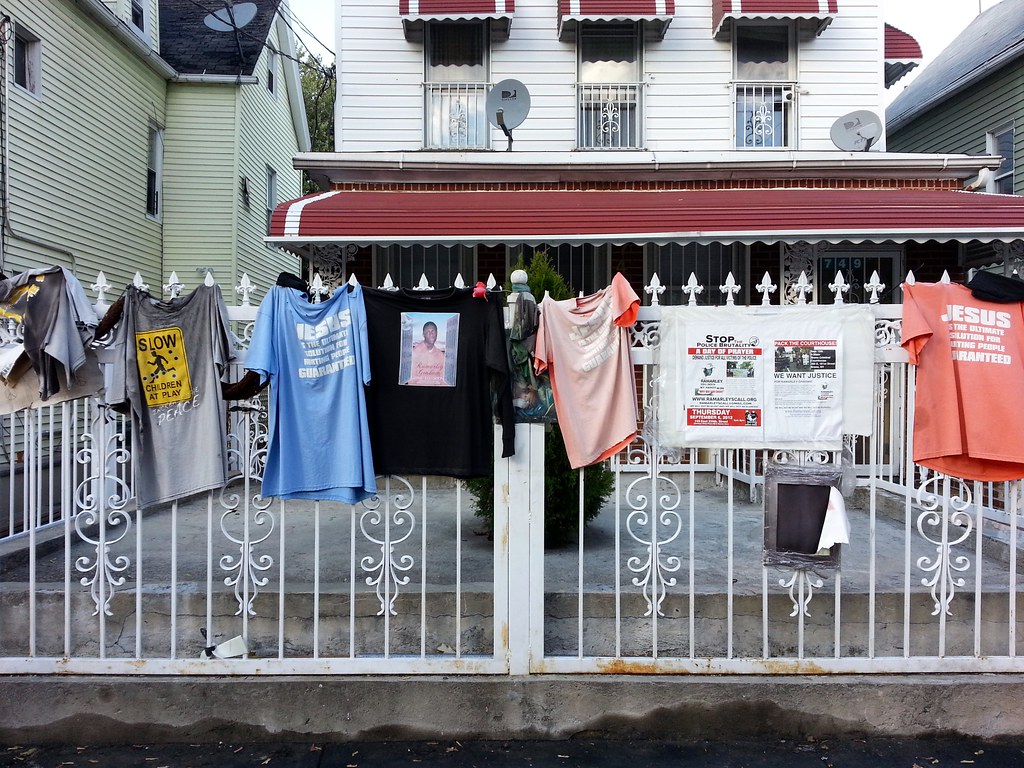
This is what remains of the memorial to Ramarley Graham. (You can see a close-up here.)
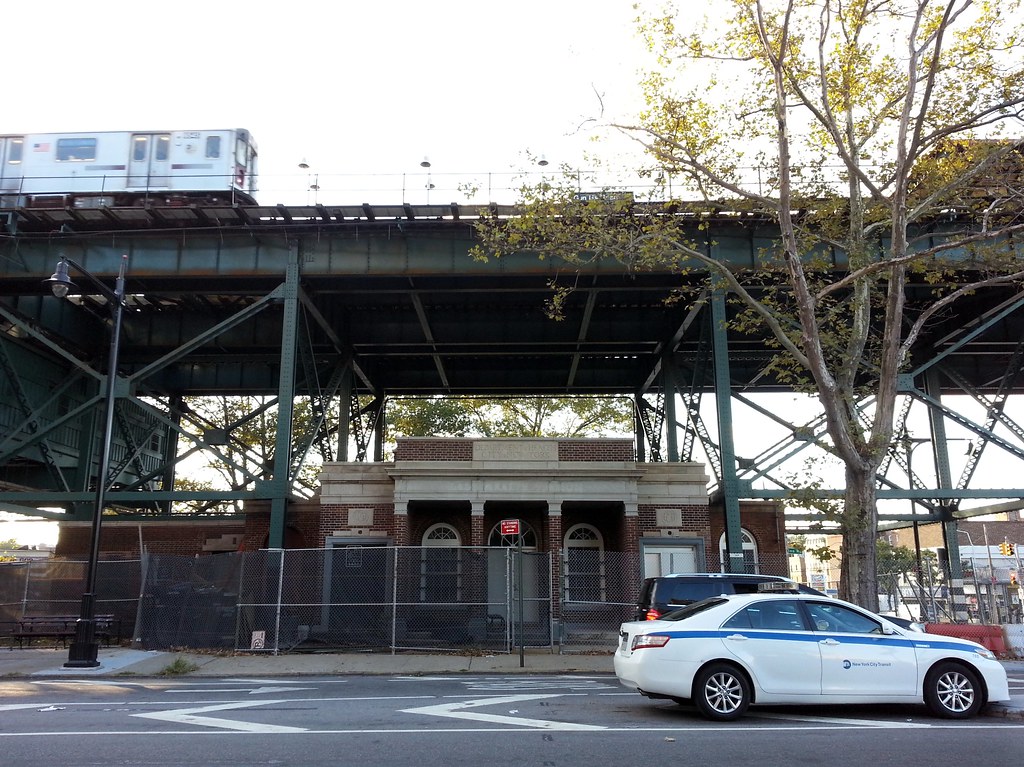
This odd little structure is nestled beneath the White Plains Road Line's Gun Hill Road station (which also once served as the northern terminus of the old Third Avenue El).
UPDATE: I've learned more about this building.

In one of nature's most unlikely and remarkable journeys (you can watch a NOVA special on the subject here), millions of seemingly delicate monarch butterflies migrate vast distances across North America each year. The monarchs that live east of the Rockies cover the most ground, often traveling 2000 miles or more from various points across Canada and the northern US, most of them converging in late October and early November on a small area within the pine-oak forests of central Mexico's Trans-Mexican Volcanic Belt, where they congregate together in incredibly dense clusters on the trees to wait out the winter before returning north.
What's even more mystifying than the perseverance shown by these little creatures is their navigational ability. An individual monarch does not live long enough to make the full round-trip flight; it takes four generations of butterflies to complete the journey. But somehow, every year, hordes of monarchs find their way back to the same few wintering sites in Mexico, places that they've never seen, or even been near, before. A few years ago, a scientist captured some monarchs in Kansas and transported them 1000 miles to Washington, DC, where he released them. Taking wing from this totally unfamiliar location, the butterflies managed to reorient themselves and adjust their course, making it back to Mexico with all the other monarchs in time for winter!




